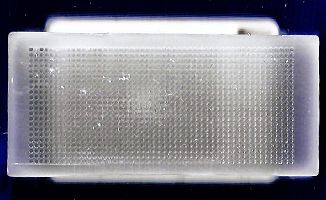The loss of the function in any one of four human DNA mismatch repair genes, hMSH2, hMLH1, hPMS1 , and hPMS2 , is thought to lead to deficient mismatch repair (MMR) of DNA in the somatic cells leading to increased mutations and thereby cancer development. Microsatellite instability (MI) detected by PCR analysis has, to date, been the hallmark of loss of the function of these genes. Western and Northern blotting has confirmed the loss of MMR protein expression with MI. However, this technique relies on fresh samples for DNA extraction and requires a normal tissue sample (see Chapter 41). Expression of MMR proteins can now be examined in both fresh and archival paraffin-embedded tissue samples by immunohistochemistry. This was first described for polyclonal hMSH2 antibody, in paraffin-embedded tissue, by Wilson et al. (1 ) and confirmed by Leach et al. (2 ), who showed that hMSH2 is highly expressed in the nuclei cells of the gastrointestinal epithelium that undergo rapid renewal in both the ileum, colon, and esophagus. Thibodeau et al. (3 ) examined paraffin-embedded tissue from colorectal tumors for both hMLH1 and hMSH2 genes and function by DNA sequence analysis, MI analysis by PCR, and immunohistochemistry. They showed that loss of immunohistochemical staining for these MMR proteins corresponded very closely with loss of function of these genes detected by microsatellite analysis. Of 19 tumors showing MI, 14 had loss of either or both hMLH1 and hMSH2 immunostaining. Of eight tumors showing a germline mutation in either hMLH1 or hMSH2 , seven had a corresponding loss of immunostaining for the protein. Of 14 tumors showing a negative immunostain for one or both of hMLH1 and hMSH2 , all had MI on PCR analysis and seven had a germline mutation in the DNA sequence of at least one of the MMR genes. Fink et al. (4 ) have performed immunohistochemistry for hMLH1 and hPMS2 on fresh frozen tissue sections. They confirmed a high nuclear expression in the epithelium of the digestive tract and in the testis and ovary. We describe here a method for immunohistochemistry for hMSH2, hMLH1 , and hPMS2 in both fresh and paraffin-embedded material.






